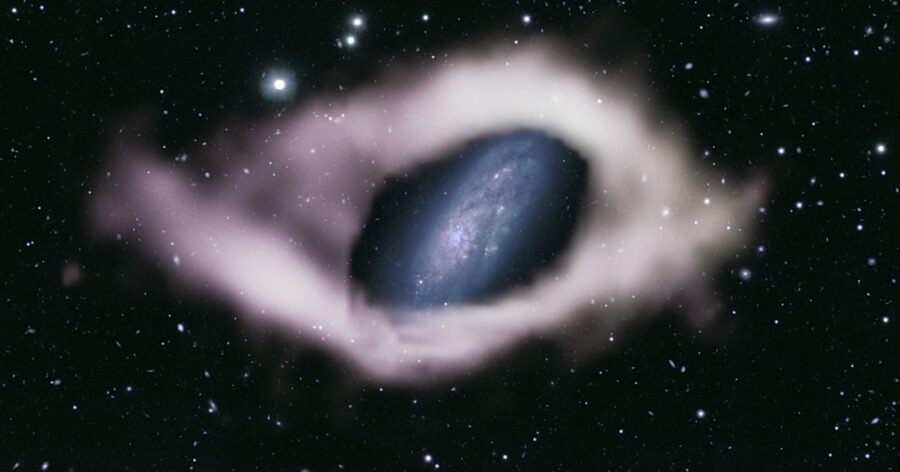Running rings around galaxies

Like chocolate bars, however, galaxies come in different shapes and sizes, and not all have a spiral structure. Some are featureless blobs shaped like rugby balls; others are ragtag objects, fittingly known as irregulars. But spirals constitute some 60 per cent of the universe’s estimated 2 trillion galaxies, so what you’ve pictured is fairly accurate. Astronomers think they understand why galaxies have spiral arms. That’s because computer simulations of the gravitational processes that shape them in the early universe also produce spirals.
But once in a while they come across a galaxy with features that simply aren’t predicted by theoretical number-crunching. One example is the so-called backward galaxy, more formally known by its catalogue name, NGC 4622. This intriguing object has two sets of spiral arms that point in opposite directions, giving the impression that it rotates backwards. Theoretical astronomers are still struggling to understand why this should be so.
Now they have another headache. Enter NGC 4632, a spiral galaxy that’s relatively close to us – just 56 million light-years away. New radioastronomy observations, made with CSIRO’s Australian Square Kilometre Array Pathfinder (ASKAP) in Wajarri Yamaji Country at Murchison, Western Australia, reveal that NGC 4632 is bedecked with a huge ribbon of cold hydrogen. It encircles the galaxy at right angles to its disc, forming what’s known as a polar ring. And it’s the first time such an unusual feature has been observed with ASKAP.
Ribbons of stars and gas around galaxies are not unknown and are thought to be formed when a dwarf galaxy is being digested by a larger spiral galaxy. Indeed, our own Milky Way has an incomplete polar ring called the Magellanic Stream in its southern hemisphere.
The new radiotelescope observations suggest polar rings of cold hydrogen might be more common than expected, since visible light telescopes are blind to them. But they challenge our understanding of their formation. Disturbances by other galaxies passing by is one suggestion. Another is smoke ring–like swirls, spun off streams of hydrogen that run along the invisible cosmic framework that connects galaxies. Either way, new insights are sure to come from NGC 4632’s cosmic ribbon.

